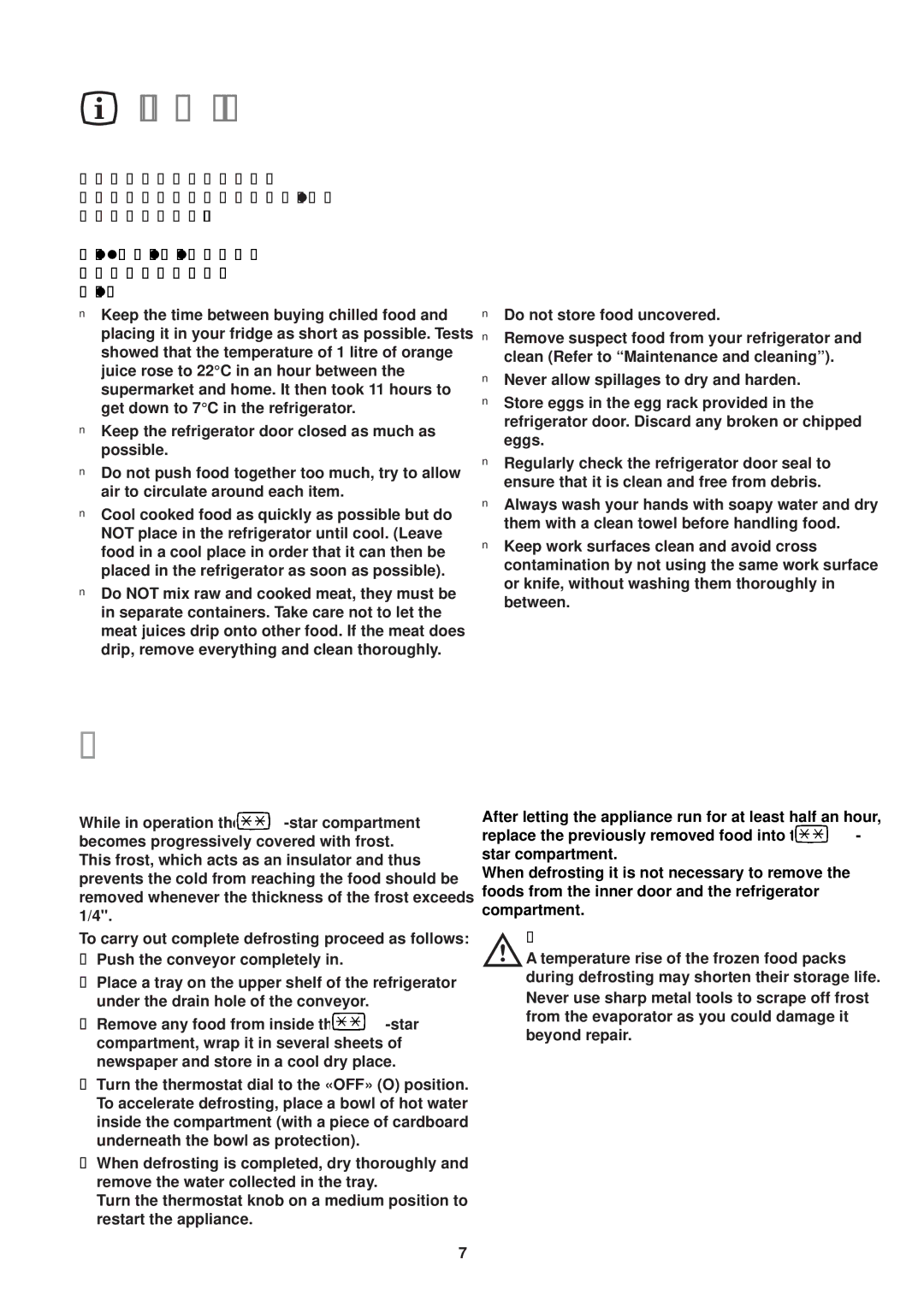ZR 65/1 W, ZR 65/1 SI specifications
The Zanussi ZR 65/1 SI and ZR 65/1 W are standout models in the realm of refrigeration, offering advanced features that elevate the user experience while ensuring optimal food preservation. Recognized for their innovative design and performance efficiency, both models exemplify Zanussi’s commitment to quality and reliability.One of the main features of the ZR 65/1 SI and ZR 65/1 W is their spacious interior, designed to maximize storage capacity without compromising on style. These models boast adjustable shelves that can be tailored to accommodate items of various sizes, making it easier to organize groceries and manage space efficiently. The transparent drawers at the bottom provide visibility while allowing easy access to frozen goods.
Energy efficiency is a hallmark of the Zanussi brand, and these models are no exception. Both the ZR 65/1 SI and ZR 65/1 W feature advanced energy-saving technologies that help to minimize electricity consumption. With their high Energy Efficiency Rating, users can enjoy significant savings on their utility bills while reducing their carbon footprint.
In terms of cooling technology, the Zanussi refrigerators are equipped with static cooling systems that maintain a consistent temperature throughout the fridge and freezer compartments. This guarantees effective preservation of food freshness and prevents frost buildup. Additionally, the innovative Fast Freeze function allows for rapid freezing of newly added food, preserving quality and nutrients.
User-friendliness is a core design principle in these models, which come with easy-to-use controls and a straightforward internal layout. The reversible door option provides flexibility in placement, ensuring that these refrigerators can fit seamlessly into any kitchen configuration.
Additionally, the elegant stainless steel finish of the ZR 65/1 SI and the classic white exterior of the ZR 65/1 W make them stylish additions to modern and traditional kitchens alike. Their robust build quality ensures longevity, providing excellent value over time.
In summary, the Zanussi ZR 65/1 SI and ZR 65/1 W combine cutting-edge technology, user-friendly features, and energy efficiency, making them ideal choices for consumers seeking reliable refrigeration solutions. These models not only meet the practical needs of everyday life but also enhance the aesthetic appeal of any home kitchen.

